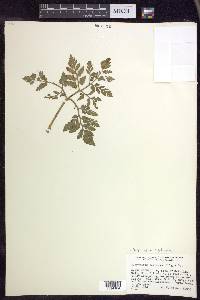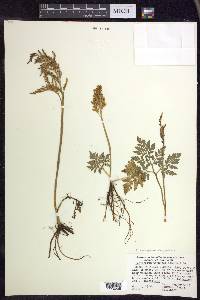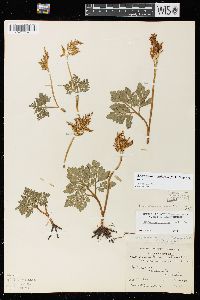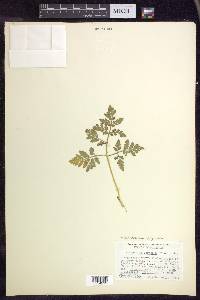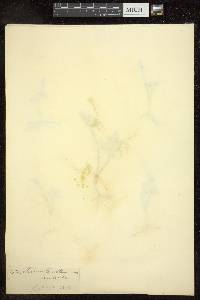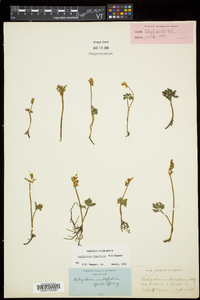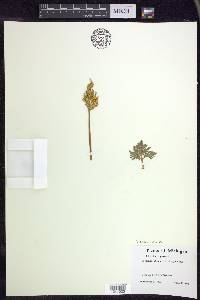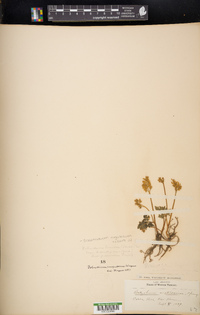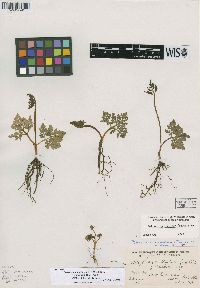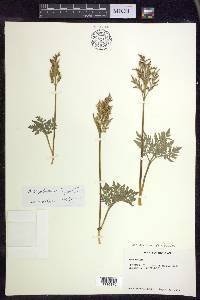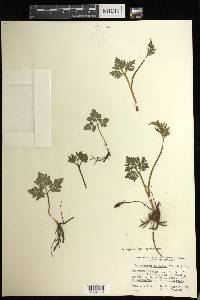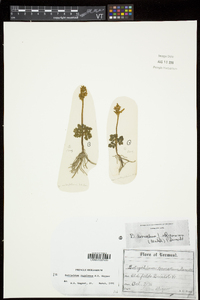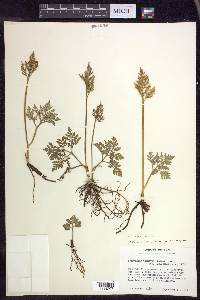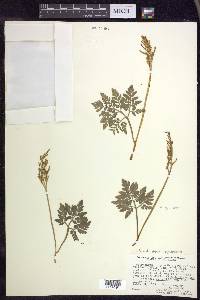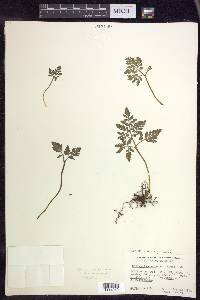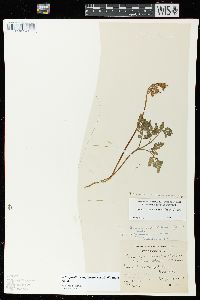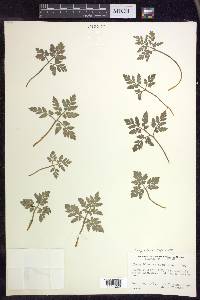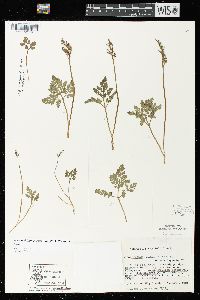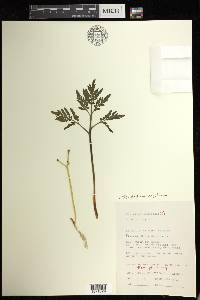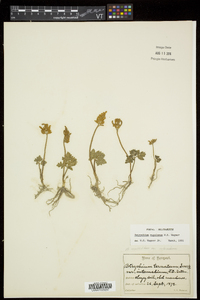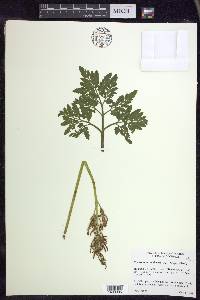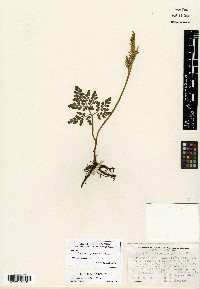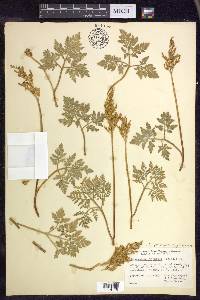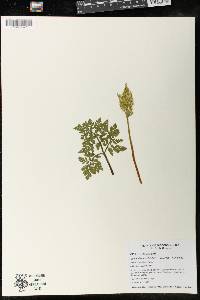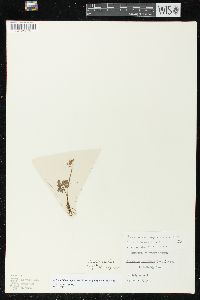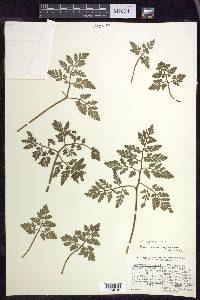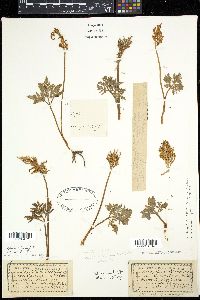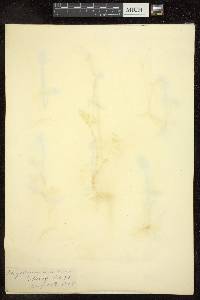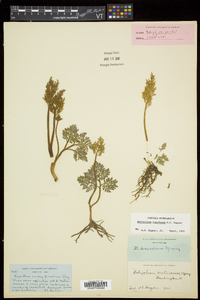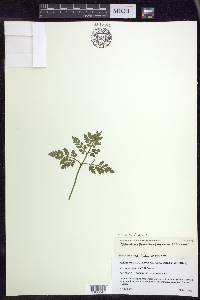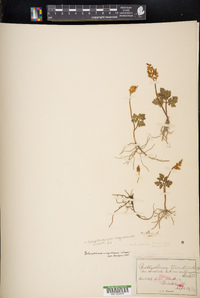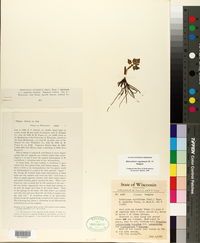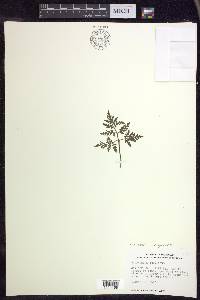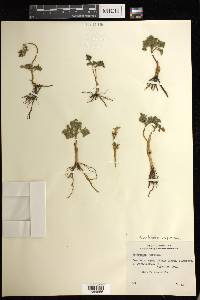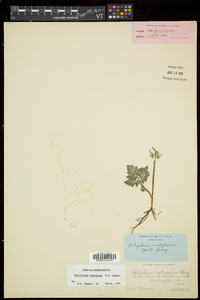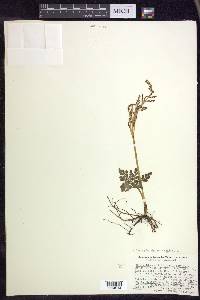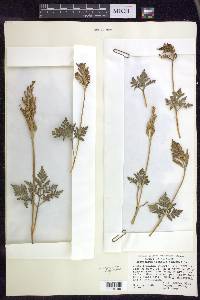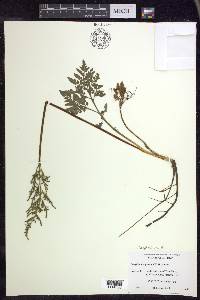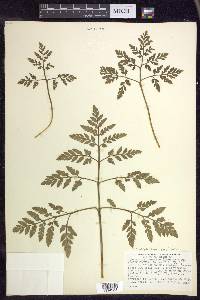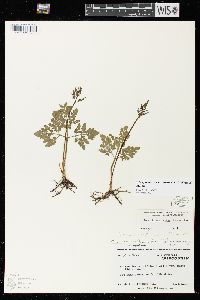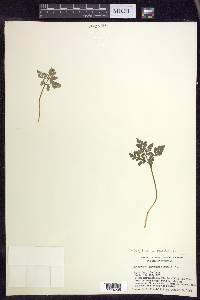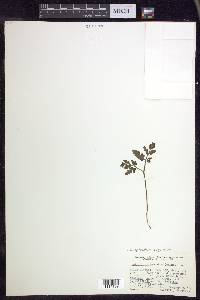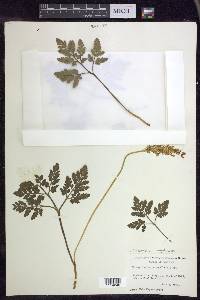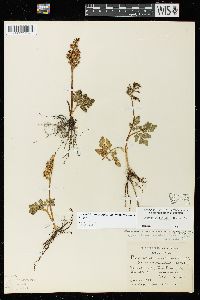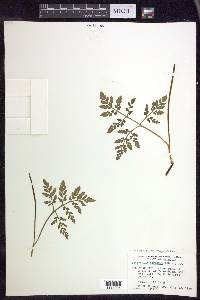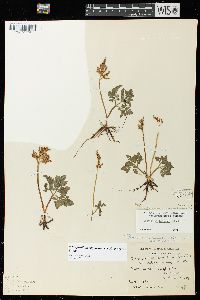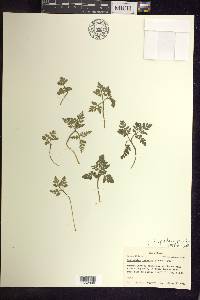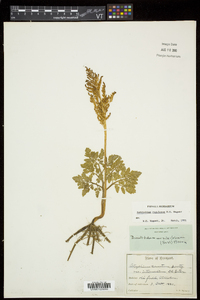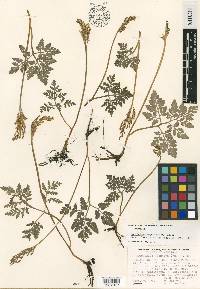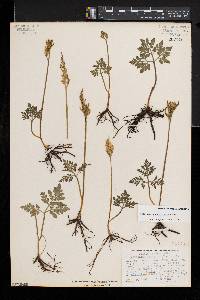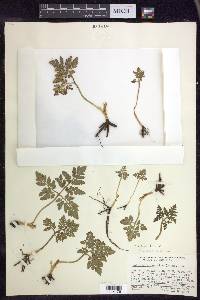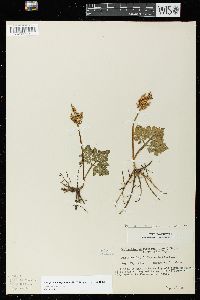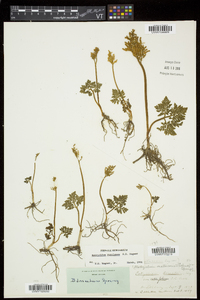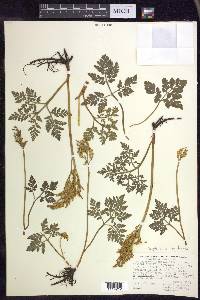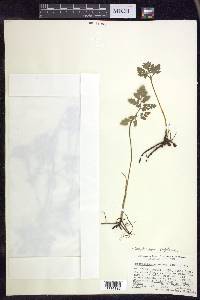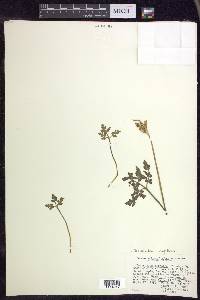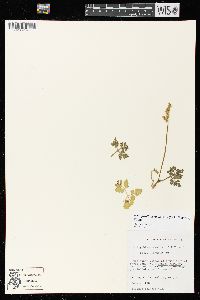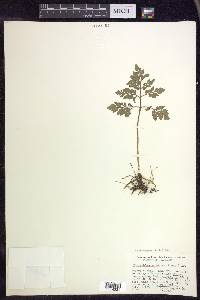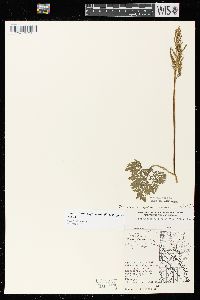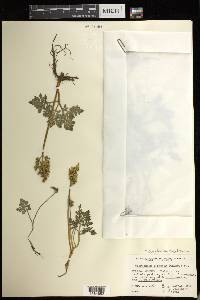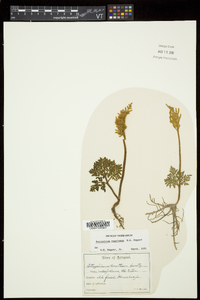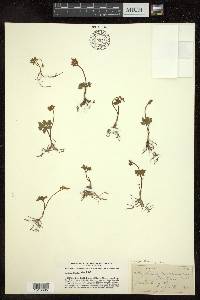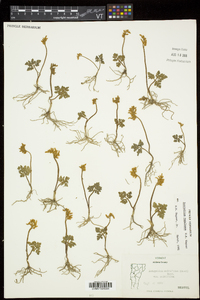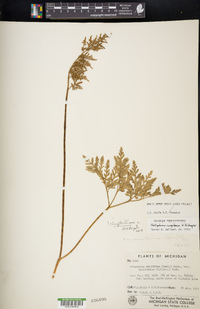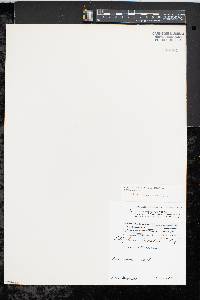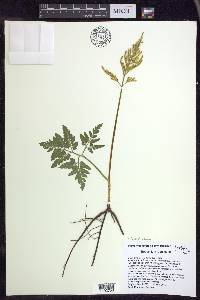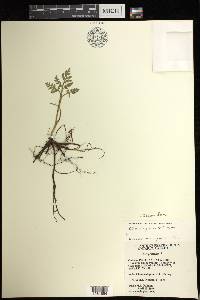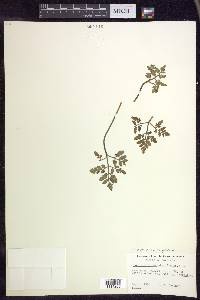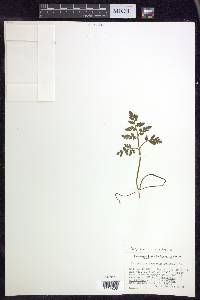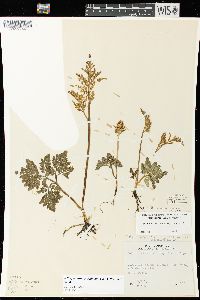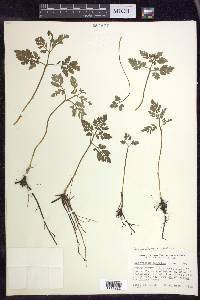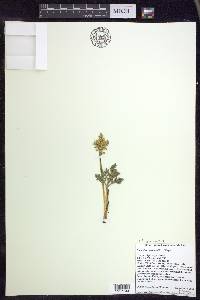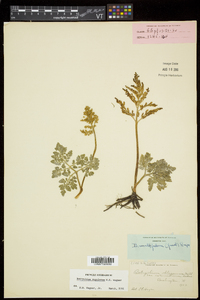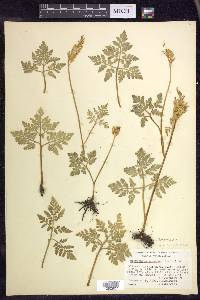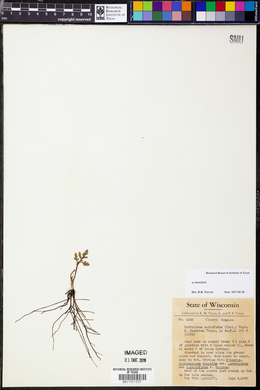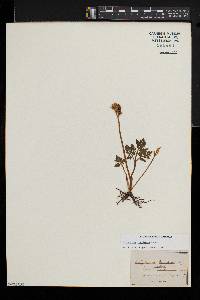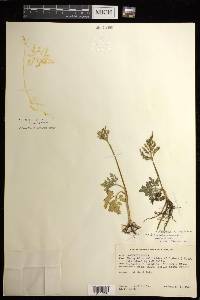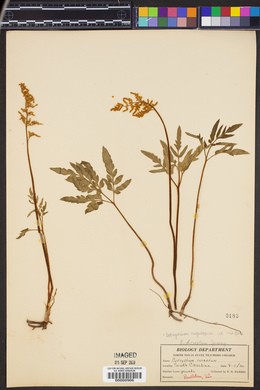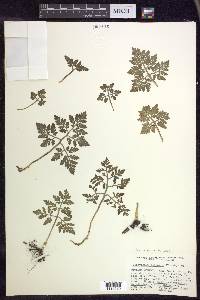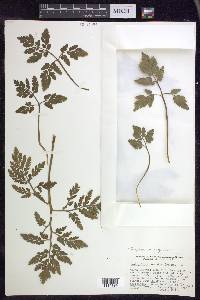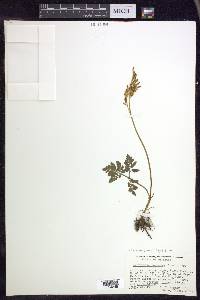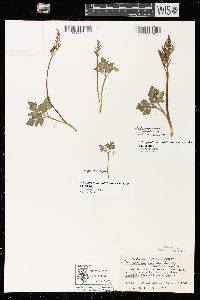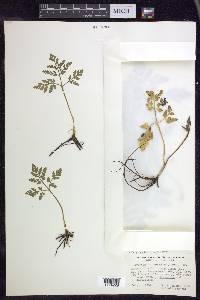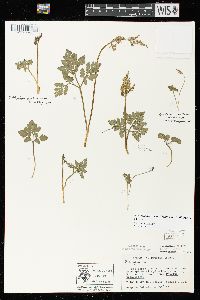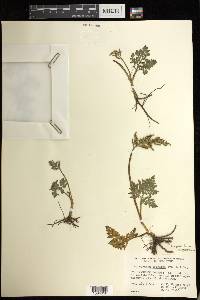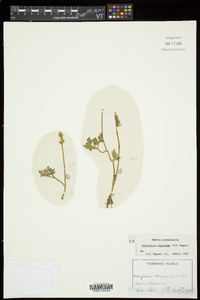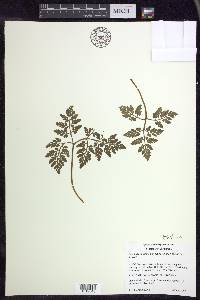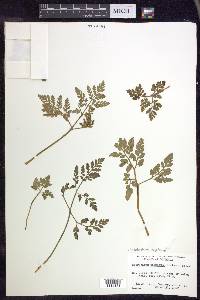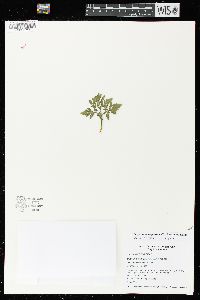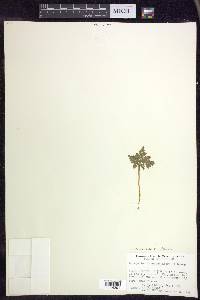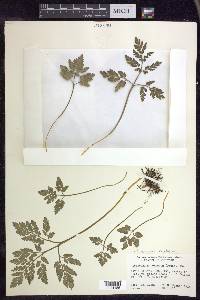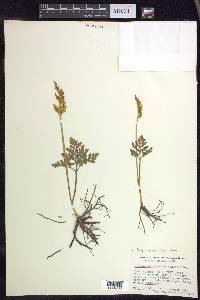
|
|
|
|
Family: Ophioglossaceae
Ternate Grape Fern, more...St. Lawrence grapefern
[Botrychium multifidum f. dentatum R. M. Tryon, moreBotrychium rugulosum W. H. Wagner] |
Trophophore stalk 2 to 15 cm, 1--2.5 times length of trophophore rachis; blade green, finely rugulose and convex distally, 2--4-pinnate, to 15 × 26 cm, somewhat herbaceous. Pinnae to 9 pairs, usually approximate, horizontal to ascending, distance between 1st and 2d pinnae not or slightly more than between 2d and 3d pairs, divided to tip. Pinnules obliquely and angularly trowel-shaped to spatulate, margins usually denticulate, apex acute, venation pinnate. Sporophores 2-pinnate, 1--2 times length of trophophore. 2 n =90. Leaves green over winter, appearing in midspring. In open fields and secondary forests over wide range in vicinity of St. Lawrence Seaway; 200--1000 m; Ont., Que.; Mich., Minn., N.Y., Vt., Wis. Perennial fern 10 - 45 cm tall Stem: single, upright, very short and inconspicuous, up to 5 mm in diameter with a thickened base (caudex). Spores: thousands per sac, all of one kind, three-sectioned (trilete), thick-walled, and with a bumpy or pimply surface. The spores give rise to the gametophyte (the sexual phase of the plant), which is broadly egg-shaped, unbranched, tiny (1 - 3 mm tall, 1 - 10 mm diameter), fleshy, not green, underground, saprophytic, and inhabited by symbiotic fungi (mycorrhizae). Leaf: one per stem, on stalk arising from an expanded, clasping base, which forms a closed sheath around stem apex. The single leaf is made up of two parts arising from a shared stalk: a sterile, green, expanded blade portion (trophophore); and a fertile, stalk-like, spore-bearing portion (sporophore). Leaves appear in spring, but usually remain green even over winter. Roots: up to ten per plant, blackish, 1 - 4 mm in diameter, and originating 1 cm below the base of the plant. Similar species: Botrychium rugulosum is incredibly similar to B. multifidum, but the trophophore segments of that species are more rounded, normally not very toothed, and typically leathery in texture. Also somewhat similar is B. oneidense, but that species tends to have dull, bluish green trophophores that are not wrinkled, and the terminal pinnules are distinctly larger than the lateral pinnules. Similarly, B. dissectum has larger terminal pinnules than lateral pinnules, but also differs by the pinnules being narrow with finely cut edges, thus the trophophore appears finely dissected. Possibly somewhat similar is B. virginianum, but that species has the sterile portion of the leaf (trophophore) stalkless at the the base of the fertile portion (sporophore), which is at least midway up the shared main stalk. Our other species have trophophore blades that are distinctly longer than wide. Habitat and ecology: Possibly extinct, found only once in Lake County, Indiana in 1878. Occurence in the Chicago region: native Notes: This species is incredibly similar to B. multifidum. It is very difficult to distinguish herbarium specimens of the two species. Author: The Field Museum Blade convex and rugulose in life; ultimate segments angular, acute and more coarsely and irregularly toothed or cleft; otherwise much like no. 5 [Botrychium multifidum (S. G. Gmel) Rupr.]; 2n=90. Woods, moist pastures, and swampy places; N.H., Conn., and s. Que. to Wis. and Minn. Rare. Gleason, Henry A. & Cronquist, Arthur J. 1991. Manual of vascular plants of northeastern United States and adjacent Canada. lxxv + 910 pp. ©The New York Botanical Garden. All rights reserved. Used by permission. |


